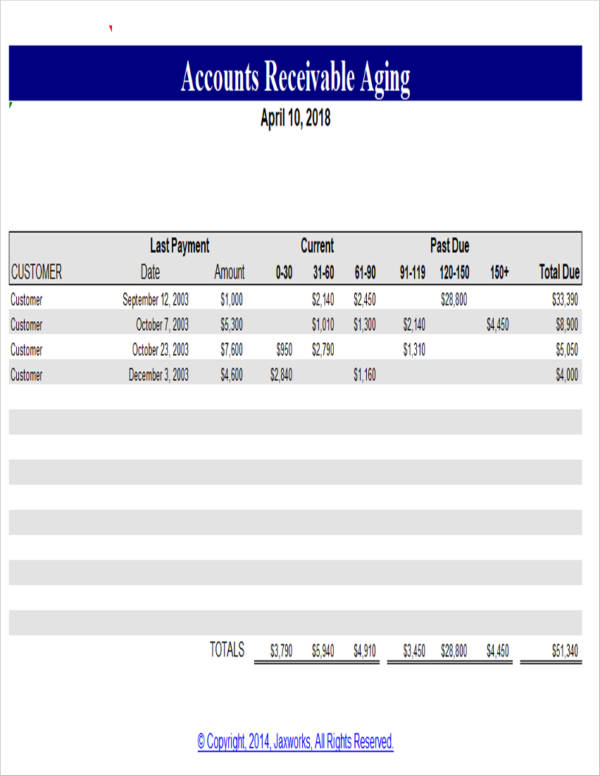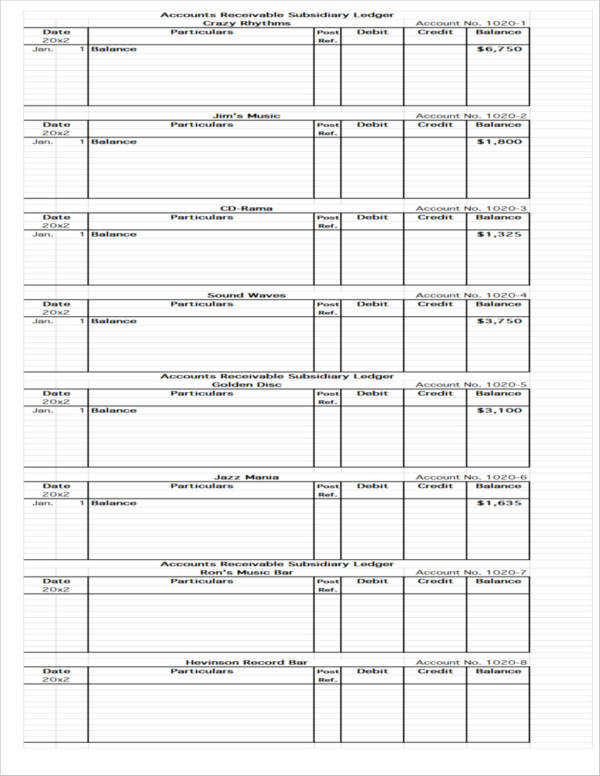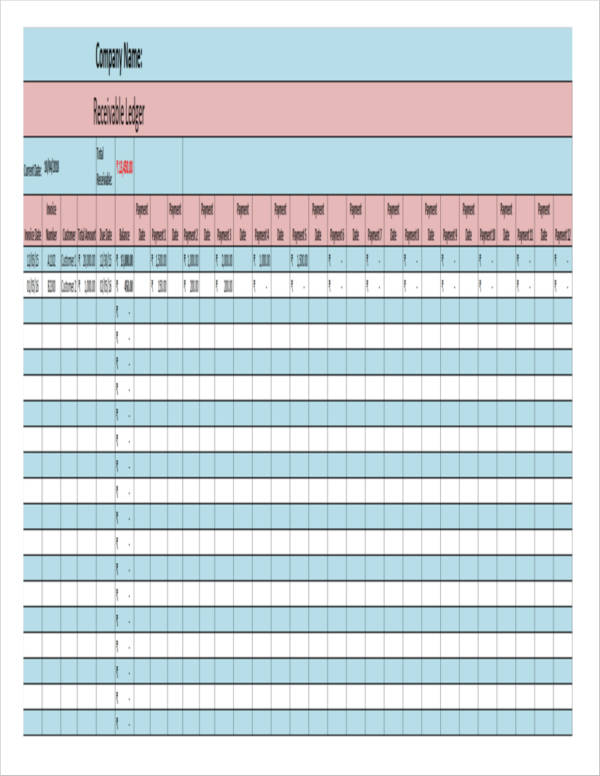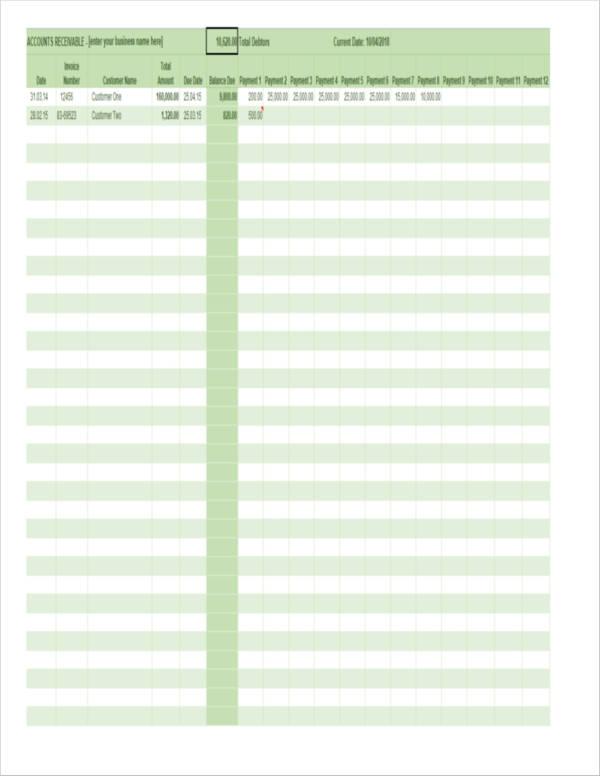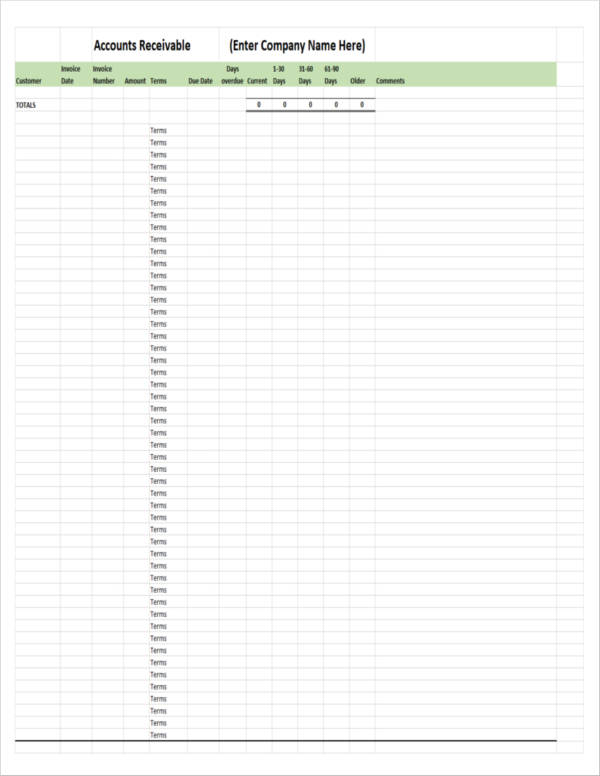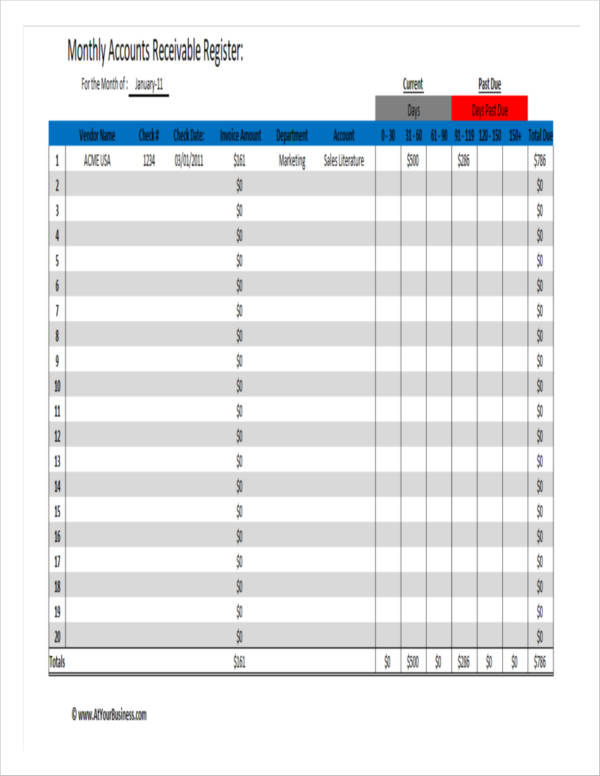Accounts receivable is the money that a business is set to receive for providing customers or clients goods and services. This is reported in a company’s balance sheet as a current asset. Estimates regarding accounts receivables are typically reported as a credit balance. A company incurs an accounts receivable if they sell to their clients on credit, which means that you allow customers to have possession of your products without asking them for the payment immediately. You may also see excel spreadsheet templates.
In this article, we would like to share with you a couple of things that will help you set up and process the accounts receivable of your company. We also included a couple of accounts receivable samples that can help you get started. If you would like to know more about accounts receivables, make sure that you continue to scroll down. You may also like sample tracking spreadsheets.
Accounts Receivable Spreadsheet Template
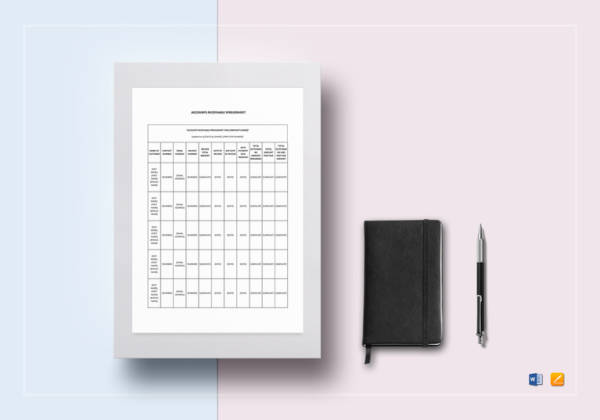
Accounts Receivable Guarantee Template
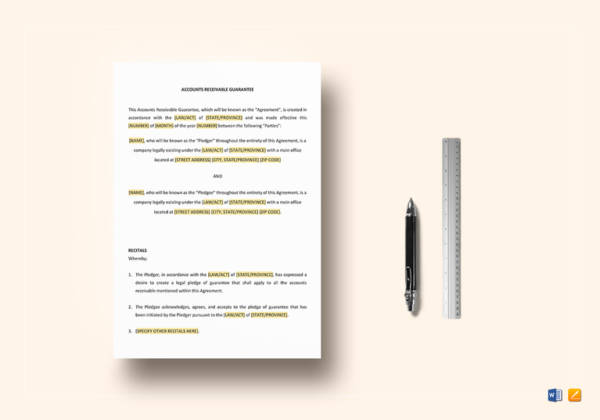
Accounts Receivable Aging in Excel
Accounts Receivable Sub Ledger
Processing Accounts Receivable
You want to make sure that you have everything set up when it comes to your company’s accounts receivable especially if your company is the type that extends credit to your customers. When setting up an accounts receivable, the process will usually involve setting up how you will extend credit to your customers, how to come up with an invoice, how to keep a database of the payments you have received and payments that are yet to be received, as well as how you can perform basic accounting processes. You may also see inventory spreadsheet templates.
This section will give you an explanation about the basics that you will need to know about setting up the processes that you need to take care of regarding accounts receivables.
1. Credit and Credit Extensions
- Develop a process on how customers can extend their credit. You have to first determine if you will allow credit extension to regular customers or with other businesses only. Once you have decided, you can come up with a basic application form that they can fill out. This form will collect all the necessary information that you will need in order to determine if the applicant is credible to have a credit extension or otherwise. This is a basic means of checking the credit score of your applicants. What you can include in the application form are the following:
- Name (individual’s name or business name)
- Contact information
- Employment information
- Address
- References
- Creditors
- Come up with the terms and conditions. The terms and conditions can be included in the application form that you come up with for your applicants. This will outline all of your requirements and all of the customer obligations that needs to be fulfilled by your customer. This will include the number of days you allot for your customers to pay for the purchased item/s, the interest you will charge, and late fees should they fail to pay on time. Include a section as well where the customer can sign or check that they have read the terms and conditions and that they agree to what is stipulated.
- Review consumer credit laws. The laws that are included in this are meant to protect the consumer. These laws are meant to help you standardize the ways on how you can effectively and efficiently communicate with your customers.
2. Preparing Invoice for the Customers
A basic invoice template is a document used by businesses to properly inform the buyer that they are due to pay a certain amount to the business in a specific number of days. Though the term invoice is used interchangeably with the term receipt, they are not the same. Invoice is issued when payment has not been made yet while a receipt is issued once payment has been made.
- Choose the best means of issuing an invoice to customers. You can opt to outsource or do this by yourself. If you choose to do the invoicing by yourself, you can make use of sample invoice templates. Doing your own invoice can help you have a good understanding of how the finances of your company works. Once you have established and expanded your company, you may now want to start getting invoicing and other accounting processes done by an outsourced company. You may also check out sample budget spreadsheets.
- Format your invoice. You want to make sure that your invoice is clearly formatted. Here’s how you can properly format your invoice, which are all basically the elements that you need to include in an invoice:
- The word Invoice should be reflected. It can either be aligned to the left side or the center of the invoice.
- A unique invoice number
- The date when the invoice was issued
- The name of the customer or the business
- The address of the buyer
- Item code
- A description of the items bought
- The quantity bought
- The amount due
- The date when the payment is due
- Digital or physical invoice? You need to make sure that you choose between a physical invoice or a digital one. A physical invoice would be one that you would need to print out or manually fill out. A digital invoice would be that you can email to the buyer. Choose a platform that you think would work best for you—or you may opt for both. You might be interested in payroll spreadsheet samples & templates.
- Return envelope. This is the envelope where the buyer will put his/her payment. Providing a return envelope makes it easier for the buyer to send in his/her payment. Your return envelope should already have your address printed.
- If your customer is wary about sending money through an envelope, you may provide your bank details such as account name and account number for his/her convenience.
3. Tracking the Receivables
- Choose a platform. You need to choose what type of system you would like to choose for tracing your accounts receivables. You may want to make use of an Excel spreadsheet template. You may also want to take a look at accounting software that will make your accounting processes easier.
- Issue financial statements to your customers. The monthly financial statement of your customers gives them a breakdown of what they have already paid, how much they still need to pay, and how many days they still have left to pay. You may also see tracking spreadsheet templates.
4. Accounting the Receivables
- Automated accounting processes. Accounting software are already programmed to automatically calculate everything that you input into the system. However, if you are making use of an Excel spreadsheet or a similar application, you want to make sure that the formulas are accurate to ensure accurate computations. If formulas and computations are accurate, it lessens the chances of you making mistakes in your financial statements. You may also check out financial spreadsheets.
- Record sales and payments. Make sure that you credit the sales accounts that the buyer owes. Make sure that you also debit the accounts receivables. Once the customer pays, you want to make sure that you debit the amount that has been paid. Do this for all the sales of goods and services. You may also see cash flow spreadsheet samples.
- Record bad debt. There are good payers and there are also bad payers as well. Accounting for bad debt means having a good estimate of how many buyers will not be able to pay in time. Make sure that you record the expense for bad debt on the same month that invoices will be issued. You might be interested in using a debt spreadsheet.
- Record early payments and any discounts due to the early payment. Typically, businesses offer discounts for buyers who pay early and those with good credit standing. Make sure that you carefully record these in your accounting system.
- Prepare an aging report. An aging report will give you details about the invoices that have yet to be paid. It will show you the current age of the invoices that have not been paid yet. This report is used to estimate the bad debt accrual that you have. This will also give you a good idea which invoices need to be followed out and which ones need to be taken care of by debt collectors. You may also like cash flow spreadsheet samples and templates.
Accounts Receivable Excel Template
Accounts Receivable Ledger Example to Download
Accounts Receivable Ledger Template
Monthly Accounts Receivable and Payable Template
We hope that our article has helped you out with the basic means of processing the accounts receivable of your company. It may be pretty tricky at first especially if you are doing this for the very first time, but as your business goes on and with a little help from some of your friends, you will surely get the hang of it soon. You may also like budget spreadsheet excel samples.
Getting a good accounting software will also not be such a good idea if you are still starting out as this can cost you a lot of money. With the help of the samples that we have included, you will surely be on your way to having a good start on processing the accounts receivable of your business. Utilizing a calculator spreadsheet can help also.
Need more information? You may want to head on to Things You Need to Know about Financial Statements.
Related Posts
FREE 20+ Training Sheet Samples in PDF | MS Word
FREE 20+ Employee Sheet Samples in PDF | MS Word
FREE 10+ Employee Attendance Sheet Samples in PDF
FREE 12+ Balance Sheet Formats in MS Word | PDF | Excel
FREE 5+ Construction Bid Sheet Samples in PDF | MS Word | Excel
FREE 15+ Construction Timesheet Samples in PDF | MS Word
FREE 26+ Construction Sheet Samples in MS Word | Google Docs | Excel
FREE 20+ Continuation Sheet Samples in PDF | MS Word
FREE 25+ Program Sheet Samples in MS Word | Google Docs | Pages | PDF
FREE 33+ Student Sheet Samples in PDF | MS Word
FREE 32+ Planning Sheet Samples in PDF | MS Word
FREE 10+ OC Sheet Samples in PDF
FREE 10+ Beat Sheet Samples in PDF
FREE 3+ Paper Sign Up Sheet Samples in PDF
FREE 50+ Summary Sheet Samples in MS Word | Google Docs | Google Sheets | Excel | PDF

